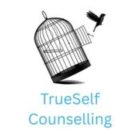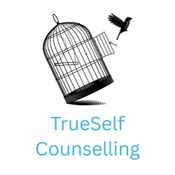Imagine someone telling you they were recently diagnosed with diabetes. Most people would respond with concern, perhaps ask questions about treatment, maybe even offer to help. Now imagine that same person says they’ve been diagnosed with depression. The reactions are often quite different — uncomfortable silence, a quick change of subject, or worse, the subtle suggestion that they should “snap out of it.”
This difference in response lies at the heart of mental health stigma. While we’ve made great strides in awareness and education, stigma still remains one of the biggest barriers to healing — and to open, honest conversation.
What Is Stigma?
Stigma is a set of negative beliefs, attitudes, or stereotypes about a group of people. It’s the invisible judgment that tells someone with a mental illness that they’re less valuable, less trustworthy, or less “normal” than someone without it.
There are different types of stigma:
- Public stigma: Society’s negative attitudes about mental illness.
- Self-stigma: When individuals internalize those beliefs and feel shame.
- Institutional stigma: Policies or systems that limit access or rights (e.g., lack of mental health insurance coverage, workplace discrimination).
Stigma is subtle, but it’s everywhere. It shows up in casual language (“She’s totally bipolar”), in pop culture portrayals of “crazy” people, in hiring decisions, in healthcare disparities, and even in our own thoughts — the ones that say, “What’s wrong with me?”
The Historical Roots of Stigma
To understand where stigma comes from, we need to look back.
Throughout history, mental illness has been misunderstood, feared, and often punished. In ancient times, people with mental health conditions were believed to be possessed by spirits or demons. They were isolated, exorcised, or treated with cruelty.
By the Middle Ages, mental illness was treated as a moral failing. Those who struggled were often hidden away or imprisoned. Asylums in the 18th and 19th centuries were often places of neglect and abuse — more about containment than care.
It wasn’t until the 20th century that mental illness began to be studied with scientific rigor. But even with growing knowledge, stigma persisted. Terms like “insane,” “lunatic,” and “mad” were common — and damaging.
The result? A long-standing cultural narrative that mental illness is something shameful, dangerous, or unworthy of compassion.
Modern Stigma: Alive and Unwell
Fast forward to today, and while we’ve made significant progress, stigma hasn’t disappeared. It’s just changed shape.
We see people talking more about anxiety and depression, but often only in “acceptable” or sanitized ways. Celebrities might speak about burnout or stress, but fewer will talk openly about PTSD, bipolar disorder, or schizophrenia.
Many workplaces claim to support mental health but subtly penalize employees who take mental health days. Schools might teach mindfulness but fail to fund counseling services. Even well-meaning friends may offer support that feels invalidating: “Everyone gets sad sometimes” or “Have you tried yoga?”
And within communities of color, LGBTQ+ populations, and immigrant families, stigma can be compounded by cultural norms that discourage vulnerability or frame mental health struggles as personal or spiritual weakness.
The Impact of Stigma
Stigma is not just a social issue — it’s a health issue. And its consequences can be devastating.
- Delayed or Avoided Treatment
Many people don’t seek help because they fear judgment. According to the National Alliance on Mental Illness (NAMI), nearly 60% of adults with a mental illness received no mental health services in the past year. - Worsening Symptoms
Without support, symptoms can intensify. Depression deepens. Anxiety becomes debilitating. People may turn to substance use, self-harm, or isolation. - Low Self-Esteem and Shame
Stigma tells people their pain is a burden. Over time, this internalized shame can erode self-worth and make recovery feel out of reach. - Discrimination
Stigma shows up in healthcare disparities, employment barriers, and unequal treatment in the criminal justice system. People with mental illness are more likely to be unemployed, homeless, or incarcerated — not because of their condition, but because of how society responds to it.
Language Matters
One of the most powerful tools of stigma is language. The words we use shape how we think and feel — and how others see themselves.
Phrases like “crazy,” “psycho,” or “mentally unstable” may seem harmless or humorous, but they reinforce negative stereotypes. Saying someone “is schizophrenic” instead of “has schizophrenia” defines them by their condition, rather than acknowledging it as one part of their life.
Instead, we can practice person-first language:
- “They have depression” instead of “They’re depressed.”
- “Living with bipolar disorder” instead of “bipolar person.”
We can also be mindful of how we talk about recovery. Mental illness isn’t always something that gets “fixed” — it’s often managed. Saying someone “overcame” their anxiety might imply that others who still struggle are failing, when in truth, mental health journeys look different for everyone.
Stories Break Stigma
One of the most effective ways to fight stigma is through storytelling.
When people share their mental health journeys — the highs, the lows, the messy in-betweens — it creates connection. It opens doors. It says, “You’re not alone.” And that simple message can be life-saving.
Think about the impact when a public figure talks openly about living with anxiety or trauma. Think about the courage it takes for a friend to say, “I’m in therapy” or “I’m on medication and it helps.” These stories disrupt shame. They normalize care. They change the narrative.
We need more stories — and not just from celebrities or influencers, but from everyday people. From parents, students, teachers, healthcare workers, artists, and neighbors. Because the more diverse and honest the voices, the more inclusive and powerful the conversation becomes.
Community and Culture
Breaking stigma also means addressing the cultural context in which it lives. In some communities, mental health is still deeply misunderstood or silenced due to:
- Religious beliefs that frame mental illness as punishment
- Generational trauma and distrust in medical systems
- Social pressure to appear “strong” or “perfect”
- Lack of access to culturally competent care
We need culturally sensitive conversations that meet people where they are. That honor their lived experience. That combine traditional healing practices with modern tools. That recognize the role of racism, homophobia, transphobia, classism, and ableism in mental health outcomes.
Stigma cannot be separated from systems of oppression. To truly dismantle it, we have to include everyone in the solution.
What You Can Do to Break the Stigma
You don’t have to be a therapist or public speaker to fight stigma. Here are ways you can be part of the change:
- Speak Up
If you’re comfortable, share your experience. Your voice can validate someone else’s silence. - Educate Yourself and Others
Learn the facts. Correct misinformation. Share resources. - Use Supportive Language
Be mindful of the words you choose. Say what you mean with empathy. - Challenge Stereotypes
If someone makes a harmful joke or dismissive comment, say something. Silence reinforces stigma. - Support Mental Health Policies
Advocate for better access to care, insurance coverage, and protections for those living with mental illness. - Normalize Help-Seeking
Whether it’s therapy, medication, or a support group, normalize reaching out as a sign of strength. - Lead by Example
Take care of your own mental health. Model rest, boundaries, and emotional honesty.
You Are Not a Label
At the heart of breaking stigma is this truth: you are not your diagnosis. You are not your symptoms. You are not broken, weak, or a burden. You are human.
Struggling with mental health does not make you less than. It makes you someone who has felt deeply, survived fiercely, and continues to show up in the world — often without anyone knowing how hard it is.
It’s time we honored that resilience instead of hiding it.
Moving Forward
Stigma thrives in silence. It grows when we isolate, when we judge, when we pretend everything’s fine.
But every time someone speaks their truth, listens with compassion, or chooses empathy over assumption — stigma loses power.
Together, we can create a world where mental health is not hidden, feared, or shamed — but understood, supported, and treated with the same urgency and humanity as physical health.
Let this be the generation that ends the silence.
Book a free consult today and start your journey to healing: https://trueself-counselling.janeapp.com/#staff_member/1

